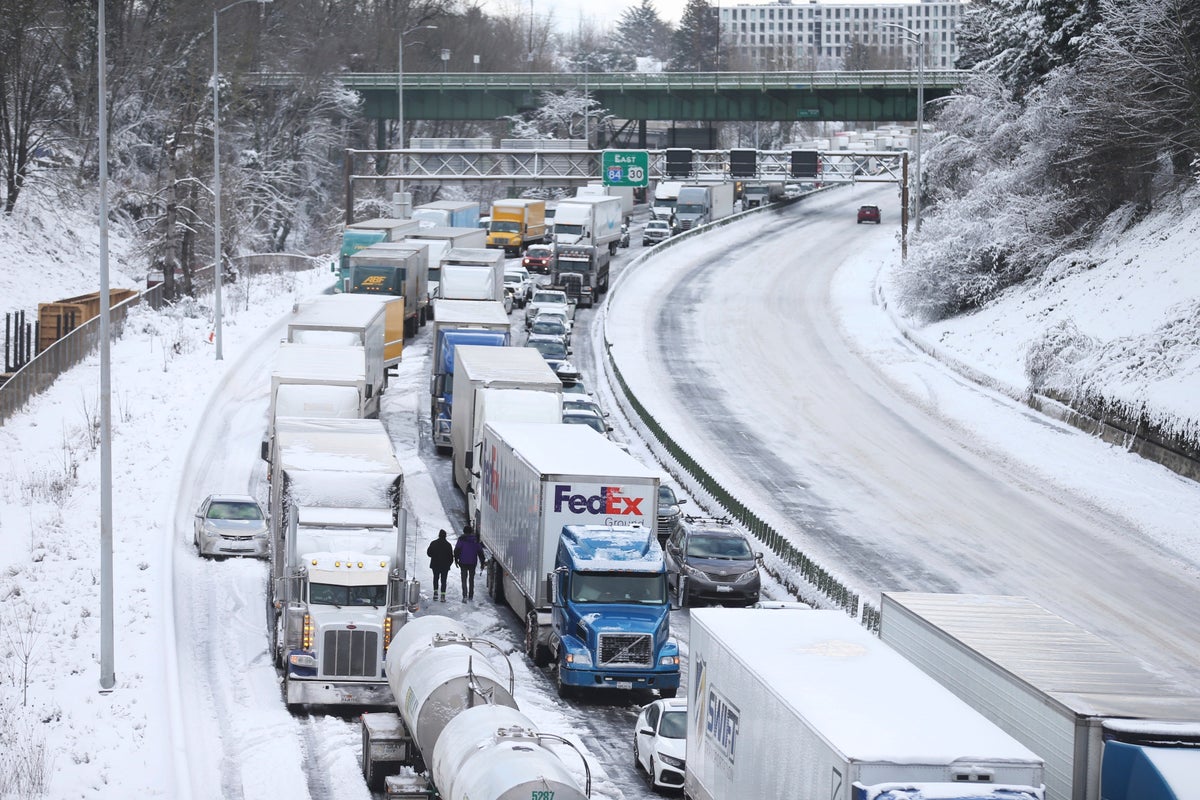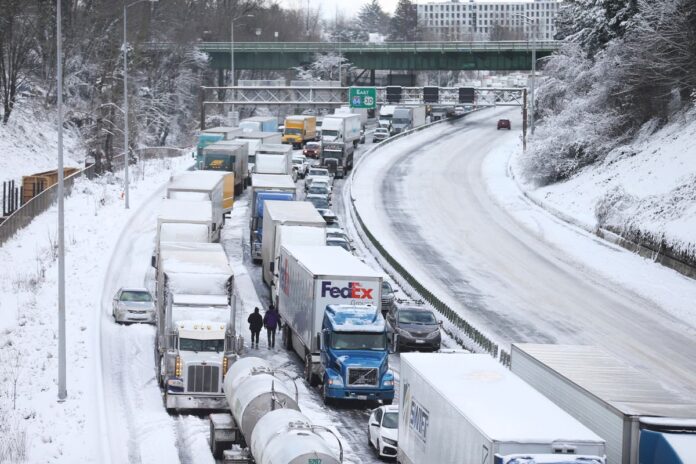[ad_1]

The American Midwest has been pounded by Winter Storm Olive this week with heavy snow, blizzards and ice prompting the cancellation of hundreds of domestic flights.
Nearly a million people were left without power on Thursday morning, with Michigan the worst-impacted state and California hit by heavy snowfall on Friday.
But you might be wondering why storms like this come to be given human names.
In-land winter storms have been named by The Weather Channel since the winter of 2012/13.
The channel names storms alphabetically based on two criteria: if there is a National Weather Service warning in place for a winter storm, blizzard or ice storm covering a population of at least 2 million and/or if such warnings cover an area of at least 400,000 square kilometres.
The Weather Channel chooses its names from a list that excludes those already used by the National Oceanic and Atmospheric Administration’s National Hurricane Centre (NHC) for a storm over the Pacific within the last six years or any retired hurricane names.
Should a particularly severe weather event hit and cause fatalities, the name will often be retired from future lists out of respect for the families who lost loved ones.
Katrina, for instance, will not be used again in the wake of the devastation caused to the Gulf Coast and southern US in August 2005.
“It’s simply easier to communicate about a complex storm if it has a name, which our naming programme has demonstrated,” the broadcaster’s Bryan Norcross has said. “Good communications benefits everyone.”
The custom of naming weather fronts reportedly goes back at least as far as the 16th century, when the names of saints were a popular choice. The modern approach to the practice originated in the 1900s in tandem with the earliest days of radio enabling ship-to-shore telecommunication for the first time.
By personifying and nicknaming extreme weather events like tropical squalls (always female in accordance with nautical tradition), meteorologists, coast guards and ships’ captains could relay information clearly between one another without fear of misunderstanding, which might have been the case had they relied on an alternative system like serial numbering, for instance.
The first storm of each calendar year was given a name beginning with “A”, the second “B” and so on.
The US Air Force Hurricane Office in Miami, Florida, tried a system of naming tropical cyclones in the North Atlantic in the late 1940s using the phonetic spelling alphabet (Storm Alpha, Storm Beta etc), according to the BBC. This led to confusion arising from differences of usage, inspiring an eventual pivot back to women’s names.
In 1953, the process became more systematised in the hands of the NHC, which drew up lists of names that could be repeated every few years for hurricanes taking shape in the North Atlantic, Gulf of Mexico and Caribbean Sea.
In 1978, men’s names were introduced for storms in the northern Pacific, with the Atlantic following a year later, a move intended to make the process less sexist following complaints from members of the public.
[ad_2]
Source link















